Your Cart is Empty
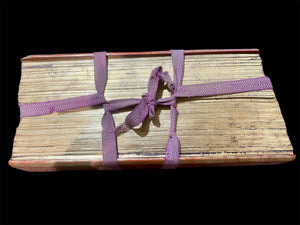
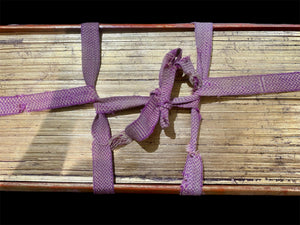
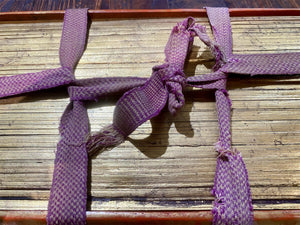
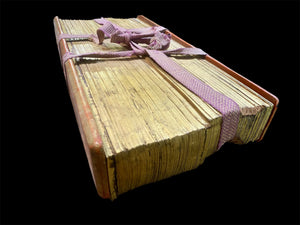
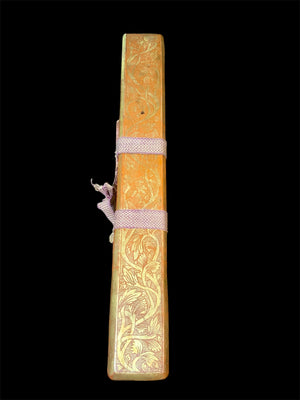
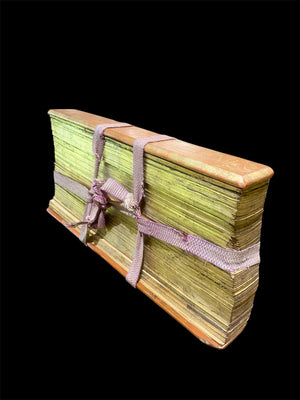
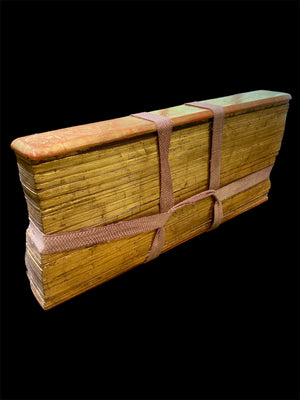
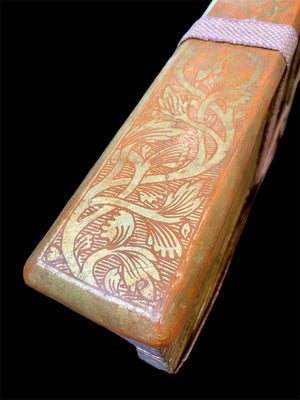
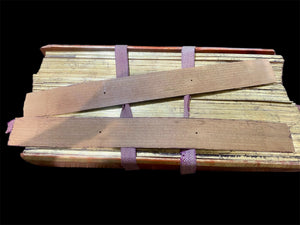

Palm Leaf Manuscript Book
$990.00
Palm leaf book, 19th century CE.Burma. Palm leaf, pigment and wood, lacquer and 24k gold gilding.
Called a parabaik, the book contains hundreds of leaves bound by two flat woven cords between a pair of lacquered protective wood covers. The cord allows the owner to bind the leaves together when in storage to keep their flattened shape.
These manuscripts are religious texts made for use in Hindu-Buddhist monasteries.The writing was made by impressing a nub tip into the page, a black ink made from charcoal and resin was then rubbed into the impressions, leaving a stained darkness to edge of the pages, which further protected them from insect depredation. It has been noted that the scripts from southeast Asia such as Sinhalese, Tamil, Burmese, etc. were adapted into curving and rounded forms because angular writing would tear up the horizontal leaffibres.
This is an excellent example of the genre of palm leaf books, being one of the largest and best preserved we have seen.
Note that the holes in the pages allow a string, or in this case two bamboo sticks, to be inserted through all the bags to assist the book in keeping its shape and to maintain the correct order of pages.
Measurements: Length 54 cm (21") x height 25 cm (9.75") x width 7 cm (2.75")
Provenance: private collection belonging to Australian collector Bernard Heaphy, acquired in the 1970s out of Thailand from a collector and dealer of Burmese goods.
Condition: Some tears and fraying to palm leaves. Chips and losses to peripheries of wood covers and leaves as per photos. Discoloration and staining, with some fading to text.










